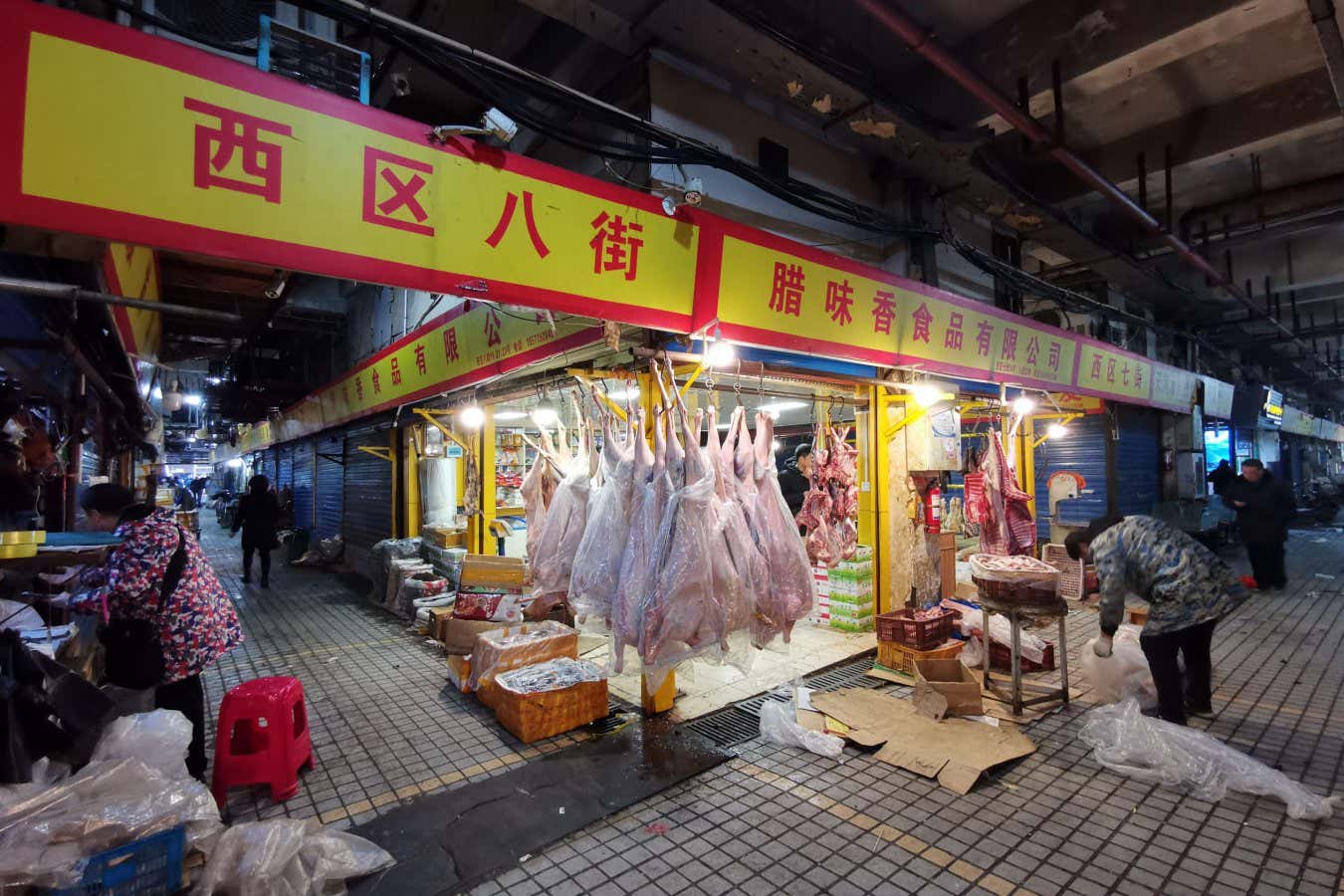Genetic testing on samples collected during the earliest days of the covid-19 outbreak suggests it is likely that the virus spread from animals to humans at the Huanan seafood market
By James Woodford
19 September 2024
Huanan seafood market in Wuhan, China, on 31 December 2019
Imaginechina Limited/Alamy
An analysis of genetic samples taken from the Huanan seafood market in Wuhan, China, has identified a shortlist of wild animals being sold there that were the most likely source of the virus that sparked the covid-19 pandemic.
While bats are thought to have been the original carrier of the SARS-CoV-2 virus, it has been previously proposed that an intermediate wild species became infected and brought it to the market, where an outbreak in humans began. Stalls there sold live animals as well as seafood.
Read more
Long covid: What we now know about its causes and possible treatments
Advertisement
An alternative suggestion is that the virus escaped from the Wuhan Institute of Virology, where staff were known to be studying bat coronaviruses, but not SARS-CoV-2.
However, a new study by an international team concludes it is more likely that the virus emerged from wild animals sold at the market and not from a lab escape. The researchers re-analysed data from 800 samples collected at the Huanan market by the Chinese Center for Disease Control and Prevention beginning on 1 January 2020, and also studied viral genomes from the earliest covid-19 cases.
Team member Ed Holmes at the University of Sydney says Chinese investigators swabbed surfaces, freezers, drains and cages to test for the presence of SARS-CoV-2.
